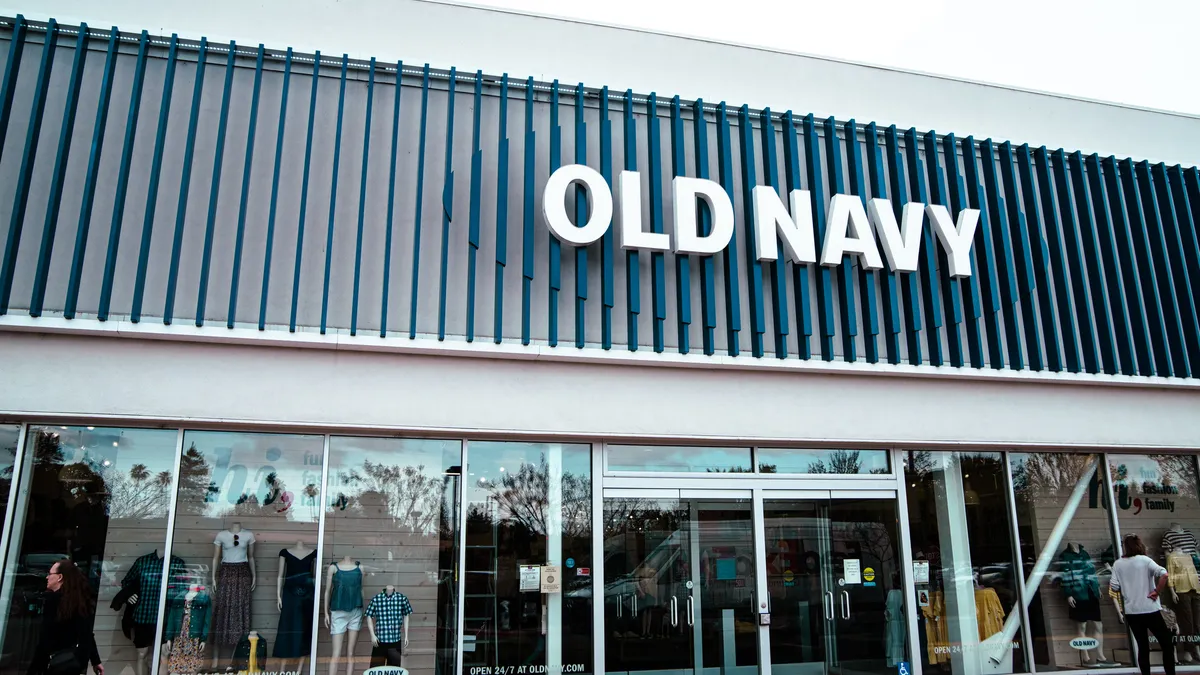Dive Brief:
- Gap ended 2022 with inventory down 21% YoY to $2.4 billion, which executives said surpassed its goals to rein in stock levels.
- The company paid the price for clearing out product. Its merchandise margin fell by five percentage points YoY in fiscal 2022, with more than half of the increase from higher discounting.
- The reduction in inventory levels also benefited from a loosening supply chain, with less product stuck in transit compared to 2021, CFO Katrina O’Connell told analysts earlier this month. Going forward, executives expect sales and inventory to be more in balance.
Dive Insight:
Inventory pileups have plagued Gap, along with many of its peers in the apparel trade, since long before 2022 brought a sharp downtick in demand and surge in excess stocks.
Gap Inc.’s rush to shed inventory last year came as net sales fell 6% across the company, which owns the Old Navy, Banana Republic and Athleta brands in addition to its namesake banner. The reduction in stock represented a bright spot in an otherwise turbulent year — especially at Old Navy, which has struggled of late but historically is a source of strength for the company.
“[W]e took decisive action to rightsize the historic high levels of inventory in the second half of fiscal 2022, which had arisen from the supply chain disruptions and also some execution issues that impacted Old Navy in late 2021 and early 2022,” Old Navy CEO Haio Barbeito said on the call with analysts.
Barbeito added that by the end of fiscal 2022, inventory at the Old Navy banner hit one of the lowest levels in its history and “made room for newness and seasonally the right assortment that you can see these days across our fleet and online.”
Prior to that, sales dipped for Old Navy in December, after the retailer cut its holiday inventory receipts and was carrying a bevy of fall inventory.
“So our ownership of inventory in the quarter was a little off for what the consumer wanted,” O’Connell said. “But once we were able to get holiday receipts down and start clearing through the inventory at markdowns, we were able to bring in spring and really see the business rebound.”
Going forward, Gap Inc. expects a better stock-to-sales ratio than in 2022, during which the company was frequently working to unload marked-down inventory on the market.
Gap plans to reach a better balance between supply and demand by chasing inventory, leaning on vendor-managed inventory, and responding quickly to customer signals and trends, executives said. The latter is a strategy being deployed at department store retailer Kohl’s after last year’s inventory headaches.
O’Connell also noted that Gap will be integrating inventory that it packed away and held in 2022 to weather the demand downturn, which should mean fewer purchasing receipts and more working capital in 2023.
Analysts with Telsey Advisory Group said in a note that despite Gap Inc.’s ongoing challenges, “the improving inventory position provides a basis for improved gross margin performance.”
Likewise, TD Cowen analysts were encouraged by Gap Inc.’s inventory progress, but noted that there is a “critical need” for more speed on inventory. And while levels were better positioned, in the analysts’ view, the company’s brands have “fashion missteps to rectify.”














